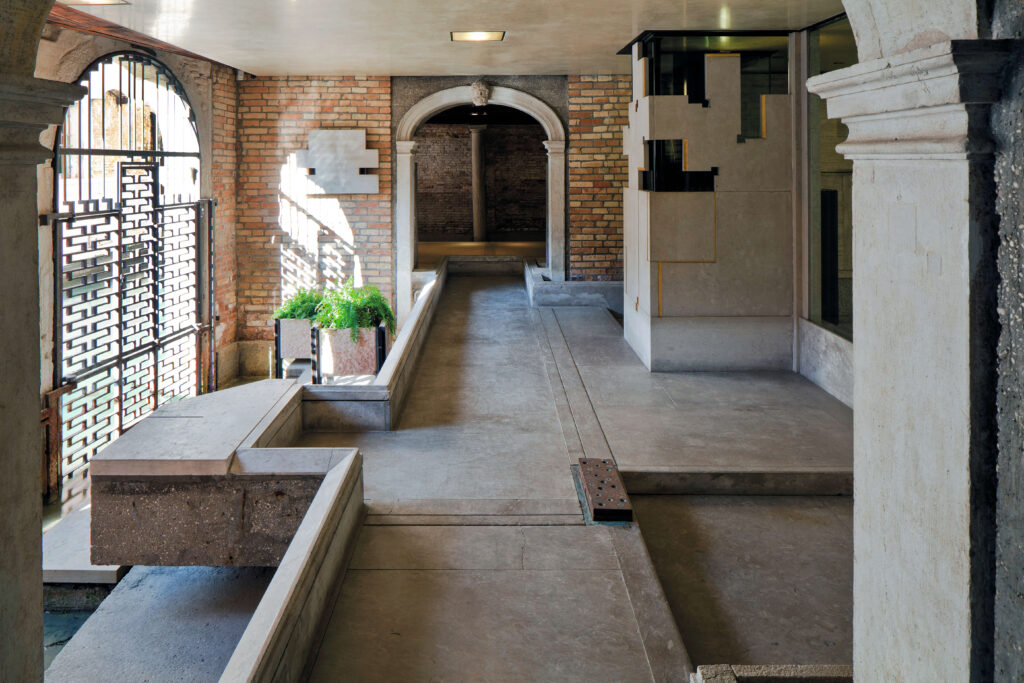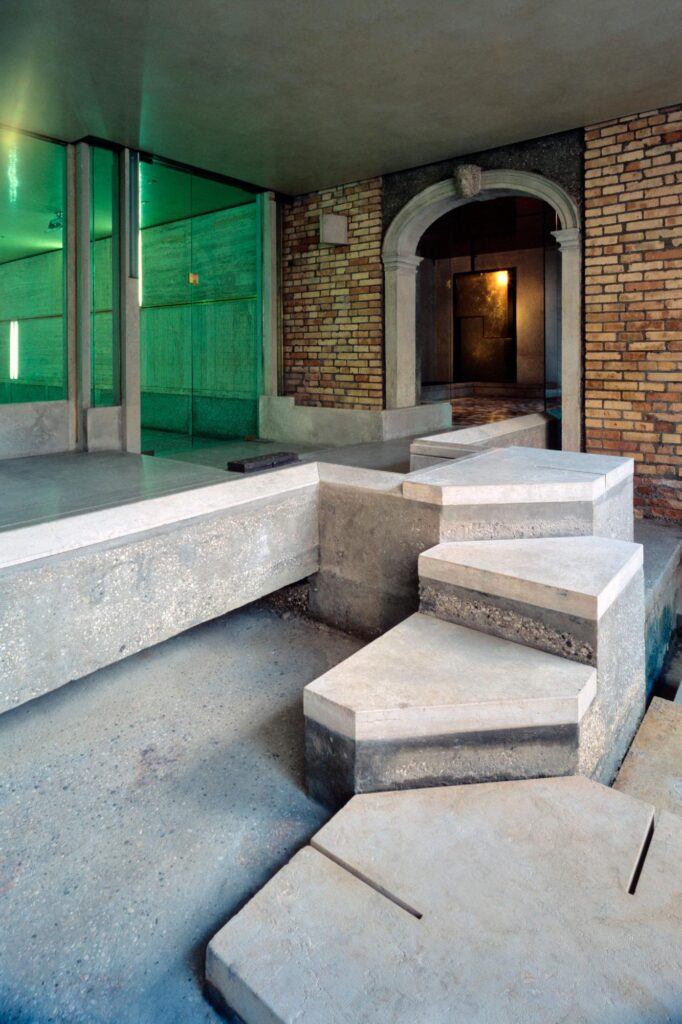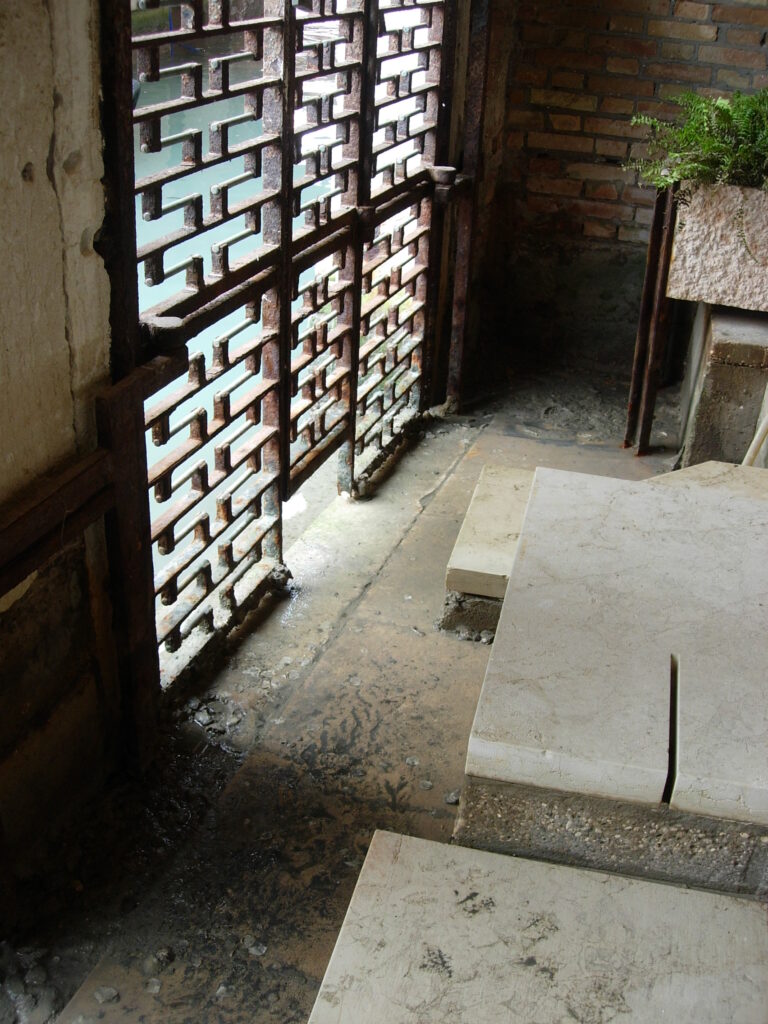Last week when visiting Fondazione Querini Stampalia in Venice, I was hosted by Dora de Diana, Head of Development and Educational Services on a wonderful private tour of one of Venice’s stunning architecture gems. On this tour I could not help myself but to think of 43-year-old Carlo Scarpa (1906-1978), the brilliant Italian architect who was hired to restore the foundation’s neglected 16th-century mansion building, which had suffered damage from constant flooding on the ground floor. Instead of isolating the building from the water as most architects would do, Scarpa integrated the water within the building in his own genius way. It was one of his first commissions as an architect, but he would have to wait years and years before he saw it completed. Architecture and art loves won’t miss the Fondazione when visiting Venice, to experince first hand how context and tradition were the point of departure for Scarpa’s avant-garde architecture.
Born in Venice, Scarpa attended the Royal Academy of Fine Arts. He began his career not in architecture, but in art glass and went to work for Venini Glassworks in Murano, where he acted as the company’s artistic director for 13 years. During his time there he created architectural glass like no other and taught the craftspeople of Murano how to move art glass from its early traditions to modernism. Throughout Il Duce’s Fascist Italy and the War, Scarpa created glass, turning the Venini factory into the center of innovation for his pioneering techniques and colors which modernized the glassblowing industry. Connecting to the island’s long history of glass blowing while creating the modern was the exact approach he would later take with regard to his architecture. When Italy went into its reconstruction program after WWII, Scarpa began to practice architecture; but even then, most of his work consisted of interventions in existing buildings. Fondazione Querini Stampalia was one of these projects and among his first commissions.
Now the Venetian architect is considered the pride of his hometown. Incorporating the island’s cultural and visual history into his magnificent modernist architecture was his short career’s mission and passion. He once famously said, “I have always had an immense desire to belong to tradition, but without having capitals and columns.” Through Scarpa’s immense respect for the history of his native city and traditional handcraftsmanship as well as his love working with craftspeople, he mastered an architecture of emotions—a personal ethos which made him one of the most admired architects of the 20th century. He is considered a prophet of postwar architecture and the guru for so many of the best architects working today; art lovers and architects regularly making pilgrimages to his buildings for inspiration and experience. Moving architecture away from the International Style, his buildings make you think differently about the art of architecture and to understand that modernism was not only about standardization, but rather a form of art in the vision of William Morris, the father of modern design who preached for the Art of Architecture. Scarpa’s buildings make you feel and guide you through a deep emotional experience.
He was commissioned to restore the headquarters of Fondazione Querini Stampalia in 1949, but the project did not start for 10 years. It was finally completed in 1963 under the Foundation’s new director, Giuseppe Mazzariol, who had also been Scarpa’s former student at the Istituto Universitario di Architettura di Venezia. Mazzariol’s essay on the project, which he published a year later, serves as the key source for one of Venice’s architectural gems. This project is not only a testimony to his genius, but also serves as a lesson for every architect because of Scarpa’s brilliant solutions and the way he integrated the traditional with the modernist, all while keeping the DNA of Venice. The integration of the water within the building makes it into a gorgeous symphony of water, glass, concrete, stone, and landscape, creating a memorable experience and one which remains with you forever. “We must control it [the water],” Scarpa said, “use it as a source of light and reflection,” thereby turning the way the water meets the building into a powerful expression of architecture. The use of glass to make the building transparent allows anyone traveling along the canal to peek through the entire building, all the way to the rear garden.
The interiors demonstrate Scarpa’s brilliant talent to insert decorative features as a part of the structure, achieving unadorned, unified spaces. His signature motifs included geometrical steps and horizontal and vertical lines. The way he would insert bronze into the concrete, stone, and plaster in the most sensible way is the work of a genius. This palazzo was gifted by Conte Giovanni Stampalia to the city of Venice in 1869 including a library and an art collection (situated upstairs). It is an unparalleled way to look back at how Venetian aristocracy lived and collected art.











I love Scarpa! I have one of his light fixtures made with dozens of tiny Murano glass shades, tinted pink and green. Made by Venini in the 1950s. What a great designer he was and his restorations of buildings were “philosophically” perfect, elegantly blending old with new. I wish I had his restoration budget for my 100 year old Bernard Maybeck-designed Italian villa in the Berkeley Hills.
Fondazione Scarpa in Venise is really amazing .. I visited it a few years ago during a Biennale..
Thanks Daniella to send again images of it and make me it visit again..
Hélin